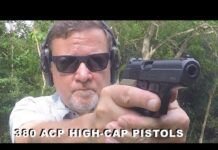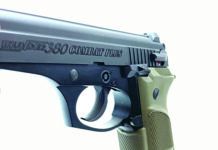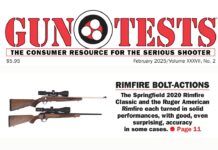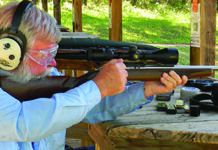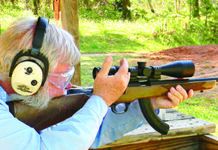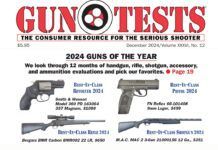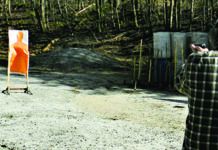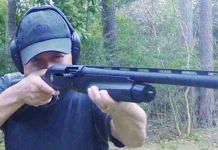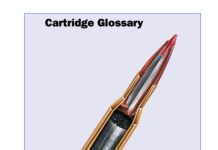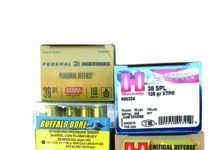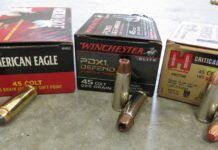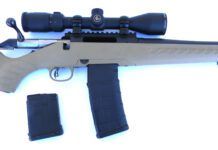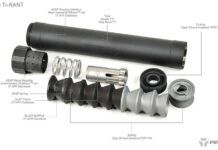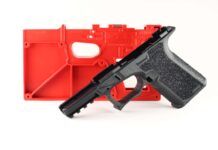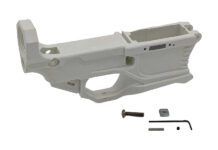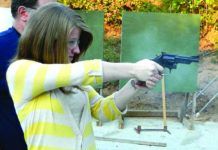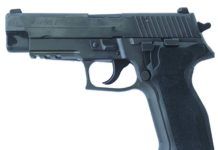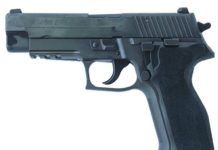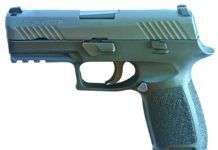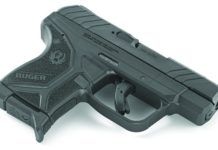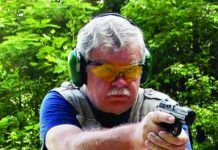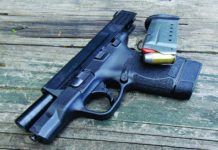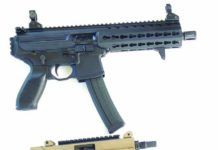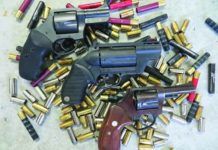357 Magnum Personal Defense Loads: Black Hills Is a Best Buy
When it comes to the 357 Magnum cartridge, the consensus is the round is a great performer. The cartridge has taken deer, bears, and even larger game. However, the rub is that these exploits were made with larger revolvers, often with barrels of at least 6 inches. When it comes to personal defense, most folks are going to carry a 2-, 3-, or 4-inch-barrel revolver. So, for those shooters who prefer the wheelgun, the Magnum needs to work in a shorter barrel.
The slow-burning powder used in Magnum loads is often a canister grade of Winchester 296 or Hodgdon H 110. This powder develops its power and velocity from a slower burn. Purpose-designed defense loads must use relatively faster-burning powder, usually a powder in the middle range. Another problem with accuracy and consistent performance is bullet pull. The lighter bullets used in defense loads often do not show as consistent a powder burn as heavier bullets, and this limits velocity with 100- to 110-grain bullets. However, makers such as Cor-Bon seem to have perfected a loading process that has solved many of the problems with bullet pull and have even gotten a consistent powder burn in short barrels. More pertinent in recent years, the Magnum has been downloaded. In present form, SAAMI specs restrict 357 Magnum pressure levels to about the same as 9mm +P+ loads.
When you consider the flash, blast, and recoil inherent in the Magnum cartridge, the question must be asked: Is the 357 Magnum the best choice for personal defense over other revolver cartridges? We believe it is. The Magnum offers excellent performance in a relatively compact package that the big-bore revolvers cannot match for speed and packing ability. The Magnum is superior to the 38 Special, no matter how hot the Special is loaded. In the May 2012 issue, we looked at the 357 Magnum for animal defense and also have looked at the 9mm versus the 357 Magnum. In this report, we are looking at the 357 Magnum solely as a personal-defense cartridge and letting the Magnum stand on its own.
There are several concerns in choosing the 357 Magnum for personal defense. One of our raters has a great deal of police experience. He noted that the 22 LR, as an example, was a proven, though under-regarded, self-defense round when fired from a rifle largely because of the ease with which accuracy was obtained. From a pistol, the results are often dismal, so the shorter-barrel, lighter revolvers might also produce poor results. Another concern is muzzle blast. The concussion inside a home could be severe, the muzzle blast is tremendous in dim light, and sometimes the flash causes night blindness. The Magnum might literally leave you deaf and dumb. However, some modern loads are especially treated to create only light muzzle flash, and as a result, they are much better suited to personal defense. If you choose a heavy hunting load and fire it in a 4-inch barrel, you will probably experience excess muzzle blast. If you use the 110-grain Cor-Bon personal-defense load, you will not experience this excess muzzle blast. The Buffalo Bore 125-grain Tactical load is another excellent choice, carefully tailored to personal defense.
A Better Price on SIG P226 CPO
Just got my December issue, and the first thing I noticed was the Guns of the Year choice of the SIG Sauer P226R as the "Best in Class Pistol." Had to snicker. I got mine at Bud's Gun Shop in Lexington, Kentucky. And it was as good as yours. When I first looked at it, I did the field strip, and it looked brand new. I am not an expert on SIGs, but I carried a 226 in 9mm for many years. I was just happy to hear the same story on the Certified Pre-Owned model. The bit of a snicker I had was because I only gave $636 for mine, whereas you paid $725. I also bought a 357 SIG barrel for it, and I am happy to say it handles the 357 SIG as well as the 40 S&W you tested. Thanks for the great article.
2016 Guns & Gear Top Picks
Toward the end of each year, I survey the work R.K. Campbell, Roger Eckstine, Austin Miller, Robert Sadowski, David Tannahill, Tracey Taylor, John Taylor, Rafael Urista, and Ralph Winingham have done in Gun Tests, with an eye toward selecting guns, accessories, and ammunition the magazine's testers have endorsed. From these evaluations I pick the best from a full year's worth of tests and distill recommendations for readers, who often use them as shopping guides. These choices are a mixture of our original tests and other information I've compiled during the year. After we roll high-rated test products into long-term testing, I keep tabs on how those guns do, and if the firearms and accessories continue performing well, then I have confidence including them in this wrap-up.
Bigger 9mms Handguns: SIG, Arsenal, and Beretta Go At It
As noted earlier in this issue, 9mm auto-loading pistols are among the most commonly purchased firearms in America for pleasure, competition, and defense. These guns are offered in many styles and price points, ranging from a few hundred to several thousands of dollars. While the handguns in this comparison are not top-end, highly customized pistols costing thousands of dollars, they are generally marketed as being well above average quality in fit, features, and capabilities.
In this comparison, we test five pistols, three of which were built by SIG Sauer, one by Beretta, and one newcomer from Arsenal. The SIGs tested are the classic P210, the P226 MK25 used by the U.S. Navy SEALS, and the relatively new P320. The Beretta tested is the recently updated M9A3. The fifth gun is the new Strike One from Arsenal.
For our evaluation, we used three different 9mm loads from three different manufacturers in two different weights and two different bullet styles. As always, the guns in question were shot by multiple testers (this time three men and three women) of different backgrounds.
We did our accuracy testing at Boyert Shooting Centers, an indoor range in Houston, and followed the standard accuracy protocol of collecting five 5-round groups at 25 yards from a rest for each pistol/ammunition combination. For this test, we also performed a speed drill. The speed drill involved starting from a low-ready position, shooting twice to the chest and once to the head of a silhouette paper target. This test was performed at 7 yards by one experienced tester with large hands. The speed test was performed after the familiarization shooting, but before the accuracy testing. The tester was given only one opportunity to perform the test. As these pistols are supposed to be superior to the average offering, our team expected above-average results and graded accordingly. Though all five pistols turned in good results and had their fans, the testing yielded one clear surprise winner.
Ruger Introduces a Bevy of New Rifles and Pistols Mid-Year 2016
The American-made LCP II is built on a one-piece precision-machined anodized-aluminum chassis with integral frame rails and fire-control housing. Additional features include a through-hardened alloy steel slide; a black, one-piece glass-filled nylon grip frame; a textured grip frame to provide a secure and comfortable grip; a finger grip extension floorplate that can be added to the magazine for comfort and more secure grip, and a blued, alloy steel barrel. The LCP II ships with one 6-round magazine.
Modern 9mm Subcompacts: CZ-USA, Glock, Steyr Compete
It goes without saying that compact and subcompact pistols chambered in 9mm Luger are a highly desirable form of personal protection. The 9mm offers acceptable ballistics without harsh recoil, and 9mm pistols from a quality maker are famously reliable. Also, 9mm compact pistols are often based on service-size handguns in the best renditions. The action and spring rates, and making certain slide travel and barrel tilt are compatible with the compact size, is important engineering. When done correctly, compact pistols are as reliable for practical use as any full-size pistol. Accordingly, our readers often ask us for reviews of certain pistols they've come across and may want to buy, if testing proves them to be worthwhile. So, this time, we line up a set of reader requests to go head to head at the range.
The first contestant was CZ-USA's 2075 RAMI B 91750 9mm Luger, $530. The RAMI is similar to the original CZ 75 but represents considerable engineering changes to accommodate the short slide and frame. The CZ 75 slide rides in the frame inside the frame rails, a design feature that some feel adds to the pistol's accuracy. This engineering lowers the bore axis as well, resulting in less muzzle flip compared to most double-action first-shot pistols. A tradeoff is that the slide is sometimes difficult to grasp and rack.
Next up was the Glock G43 Limited Edition ProGlo TALO Edition UI4350501, available for $489 from Slickguns.com. TALO is a wholesale buying cooperative that was started in 1965 by fishing and hunting wholesalers in Texas, Arkansas, Louisiana, Oklahoma. TALO commissions limited editions of firearms from Smith & Wesson, Colt, Glock, Ruger, and North American Arms and distributes them to stocking sporting goods dealers across the US. Shooters who want one of these special editions will need to contact their local dealer and ask him to order the special edition firearm from a TALO wholesaler. TALO firearms are often specially designed products with top-end accessories. An example came in 2006 with the Ruger John Wayne Vaquero. The first edition of 3500 units was featured as an American Rifleman's Magazine editor's pick. On this Glock 43, the pistol's slide is standard save for the sights, which are made by AmeriGlo and feature a brilliant orange post around a white-insert tritium front. The rear sight features a U-notch for rapid target engagement. The rear face of the rear sight is serrated to reduce glare.
The Steyr S9-A1 9mm Luger, $483 at BudsGunShop.com, isn't particularly more difficult to conceal then the RAMI, but it is not a pocket gun as the Glock 43 is. The Steyr S9A1 is a double-action-only handgun with a trigger action more Glock like than anything. The Steyr barely came in as the least expensive pistol tested. This is the largest pistol tested, but it is lighter than the RAMI due to the Steyr's polymer frame. More effort is needed to cock this pistol due to a combination of the slide design and a heavy recoil spring.
In accuracy testing from the bench at 15 yards, we used three loads. The Speer Gold Dot 124-grain +P Short Barrel hollowpoint load cost us $23/20 rounds at MidwayUSA.com. The Black Hills Ammunition 115-grain EXP ran us $14.57/20 rounds, also from MidwayUSA.com, and Winchester's 115-grain USA Forged steel shellcase FMJs came to us from Cabelas.com (prior to the buyout by Bass Pro) and cost $36 for 150 rounds. Following is how the pistols fired those rounds, along with comments by our hands-on testers.
Compact 45 ACP Shoot-Out: Glock, S&W, and Springfield
The compact self-loading pistol is easily the most popular personal-defense handgun in America. Shooters realize that small-bore handguns may not have sufficient potential for personal defense. The 9mm Luger is the baseline for personal defense in most shooters' eyes. The 40 S&W isn't as popular due to the stout recoil it produces in compact handguns. After all, many 9mms and 40s are built on the same frame. The 45-caliber compact is slightly larger, and the lower-pressure 45 ACP gives a hard push in recoil rather than the sharp jolt experienced with the 40.
To see how our shooters rated a trio of smallish 45s, we acquired three handguns based on the service-size Glock 21, Springfield XD, and S&W M&P handguns.
l From Glock comes the single-stack polymer-frame G36, which is popular, reliable, and well suited to personal defense. The Glock G36 PI3650201FGR 45 6R FS, $561, isn't the most popular Glock by a long shot, but a number of Glock fans, as well as 45 ACP fans, like the Glock 36 handgun for its simplicity and ease of use.
l Another gun in the test was Springfield Armory's XD-S, a downsized XD with a slim single-stack grip. The Springfield Armory XD-S 3.3 XDS93345BE 45 ACP, $419, is even more compact than the Glock, with a short grip frame and a five-round magazine.
l The latest arrival in the polymer-frame 45 single-stack scene is the Smith & Wesson M&P45 Shield 180022, $399. The Shield series have been popular and well accepted by concealed carry handgunners, so making a 45-caliber version of it is a natural choice.
We test-fired the pistols with a total of five loads. The first was a handload with Magnus Cast bullets (#803 225-grain Flatpoint) and 4.8 grains of Titegroup powder. Our other test loads came from CheaperThanDirt.com. One was the HPR 230-grain JHP 45230JHP ($38/50 rounds), a Hornady 200-grain XTP ($15.28/20), a Hornady 230-grain XTP +P 9096 ($16.25/20), and a Fiocchi 230-grain Extrema JHP 45XTP25 ($17.24/25). We fired the handload during the combat firing test stage, shooting 50 cartridges in each pistol. We also fired a magazine of the Hornady 230-grain +P in these stages to evaluate recoil in each handgun. The HPR 230-grain load, the Hornady 200-grain load, and the Fiocchi 230-grain Extrema were used in accuracy testing. During the course of our testing, the three pistols never failed to feed, chamber, fire or eject, so reliability isn't an issue.
As may be expected, these compact 45s are popular with fans of each company's full-size 45s. But that isn't the whole story. As we discovered, fans of the full-size Glock may prefer the XD-S and our Springfield XD fan preferred the Glock 36 compact, and so it went. The primary difference was in handling, we found. Here are our findings.
Smith & Wesson 638 Bodyguard .38 Special +P
The name Bodyguard has to be one of the all-time classic names for a self-defense gun. Certainly this Smith & Wesson design has been with us a long time, and in many ways it should be considered an unsung hero among the latest super-light firearms, mainly because it did so much so well.
Bersa Firestorm .380 ACP, $307
Back in April 2006 Gun Tests magazine tested three .380 ACP pistols, one of which was the Walther PPK, as made here in the U.S. under license by Smith & Wesson. They loved the well-built little PPK, even though it had to go back for rework before they gave it a clean bill of health. It had failed in DA shooting, but a stiffer spring gave it the equivalent of their Grade A appraisal. They recently found a gun that looked a lot like the PPK, the FireStorm by Bersa ($307 MSRP), from Argentina. Here's what they found.
Kimber Eclipse Target II 45 ACP, $1393
We compared two full-size 1911 handguns in the June 2013 issue to see which model offered the most bang for the buck. This Personal Defense test pitted two pistols of disparate price points to see if the less expensive model offered enough to consider it versus a fully equipped modern handgun. Tested were the Rock Island Armory Standard GI No. 51421 45 ACP, $410; and the Kimber Eclipse Target II 45 ACP, $1393. Here's an excerpt of that test.
9mm Pistols: Uzi Mini Pro, MPA Defender, and SIG Sauer MPX-P
The civilian-available semi-auto versions of what began as expensive SBR's (short-barrel rifles) or true submachine guns are advertised as having good accuracy and reliability while offering a more compact package than a rifle and higher round counts than most handguns. For the task of guarding the castle, we've been around the block a time or two, and have suitable choices for nearly anyone — great pistols, rifles, and shotguns. For this test, we had to suspend any preconceived notions of what we might prefer for home defense and test these firearms based on their own merits. Those merits, we found, are few. If you are shooting for fun and simply making brass, anything that goes bang is suitable. We'll get into the reasons for these judgments, but we like to be clear up front. The SIG Sauer MPX-P is one expensive means of not accomplishing much. The Uzi Pro pistol has drawbacks that made shooting downright frustrating. The MasterPiece Arms Defender proved to be the best of the three and has merit in a defensive situation, within certain narrow parameters. We arrived at this decision by using personal-defense criteria as the overriding factor in providing Buy/Don't Buy advice to our loyal readers. So, in more detail, here are our reasons for making these assessments. Our 9mm Luger ammunition for this test included a 158-grain lead round nose choice from Tomkatammo.com ($18/50 rounds). We also used Black Hills Ammunition 124-grain jacketed hollow points from VenturaMunitions.com ($14/20), a Black Hills Ammunition 115-grain EXP, an Extra Power load not quite in +P territory, also available from VenturaMunitions.com, ($17/20), and a SIG Sauer 115-grain full-metal-jacket load from Cabelas.com ($28/50). Others included the SIG Sauer 124-grain V Crown jacketed hollow point from Luckygunner.com ($16.75/20), and the Hornady American Gunner 124-grain XTP +P from MidwayUSA.com ($14.79/20). We used the Tomkat 158-grain, the Black Hills 124-grain JHP, and the SIG 115-grain FMJ load in benchrest accuracy testing.
Big-Bore Snubnoses Around $500: Charter Arms and Taurus
We recently reviewed three 38 Special revolvers that cost about $400 and thought we would increase our budget and caliber size, and then sourced three revolvers each costing about $500 in three different big-bore calibers: 44 Special, 45 ACP, and 45 Colt, often called 45 Long Colt (LC) to ensure it's not mixed up with the Auto Colt cartridge. The three revolvers included two Charter Arms products, the Classic Bulldog in 44 Special and the newer Pitbull in 45 ACP, plus the Taurus Public Defender Polymer chambered in .410 shotshell and 45 LC.
Even though these were new revolvers, we still performed a range-rod test since there was a bit of side-to-side wiggle in the cylinders of all the revolvers. Range rods check the alignment of the chambers to the barrel bore. We also noted that the action of the Taurus seemed a bit stiff; our initial dry firing in double action found the cylinder would not fully index to the next chamber at times. Dry firing took care of the indexing issue, and all passed the range rod test. We also noted during the range-rod test the barrel of the Pitbull was not fully screwed into the frame. It was off by a fraction of a turn, enough to cock the front sight to the left when aiming the revolver. It is unacceptable that a gun leaves the factory in this condition. We anticipated and needed to use Kentucky windage with the Pitbull at the range.
In the past Charter Arms revolvers have been favorably rated, but in these two examples we found exception. The not-fully-screwed-down barrel was also the reason the cylinder-to-barrel gap was so large. We measured the gap between the front of the cylinder and the forcing cone at the rear of the barrel using feeler gauges from Brownells (606-950-252WB) and found a gap of 0.010 inches for the Pitbull and the Bulldog Classic and the Taurus at 0.005 inch. A gap of 0.003 inches is desirable for a competition revolver, but up to 0.006 inches is often found. A large gap allows more gas to escape, reducing the bullet's velocity. It also means there is more flash, and if the chamber and cylinder are not perfectly aligned, a user might experience splash from burning powders and bits of shaved bullet metal. We did not experience any splash with the Charter Arms revolvers. We did note that the Classic Bulldog had about 30 fps more than the published data for Hornady Critical Defense165-grain FTX bullet, which is 900 fps out of 2.5-inch barrel. The 3-inch barrel of Bulldog must have helped increase velocity. The Pitbull had noticeably less muzzle velocity compared to factory data. We assumed the reduction came because the Pitbull has a 2.5-inch barrel and the factory data for the cartridges use either a 4- or 5-inch barrel. Reduced muzzle velocity also occurred in the Taurus.
A common feature of all three revolvers was a safety transfer bar. This system prevents the hammer from striking the firing pin unless the trigger is pulled fully to the rear.
These revolvers are made for close-in work, but we still tested accuracy out to 25 yards. Since the Taurus offers the ability to fire .410 shotshells as well as cartridges, we sourced some CCI shot cartridges in 44 Special. CCI manufactures shotshells in 45 ACP, but warns against using the the cartridges in revolvers since the crimp that holds the shot in the cartridge case may interfere with the rotation of cylinder after being fired. One of our team members regularly carries a revolver loaded with bird shot cartridges and bullet cartridges when we walks his dog in the woods. He's equipped to deal with snakes as well as bears, depending on what chamber he lets fly.


